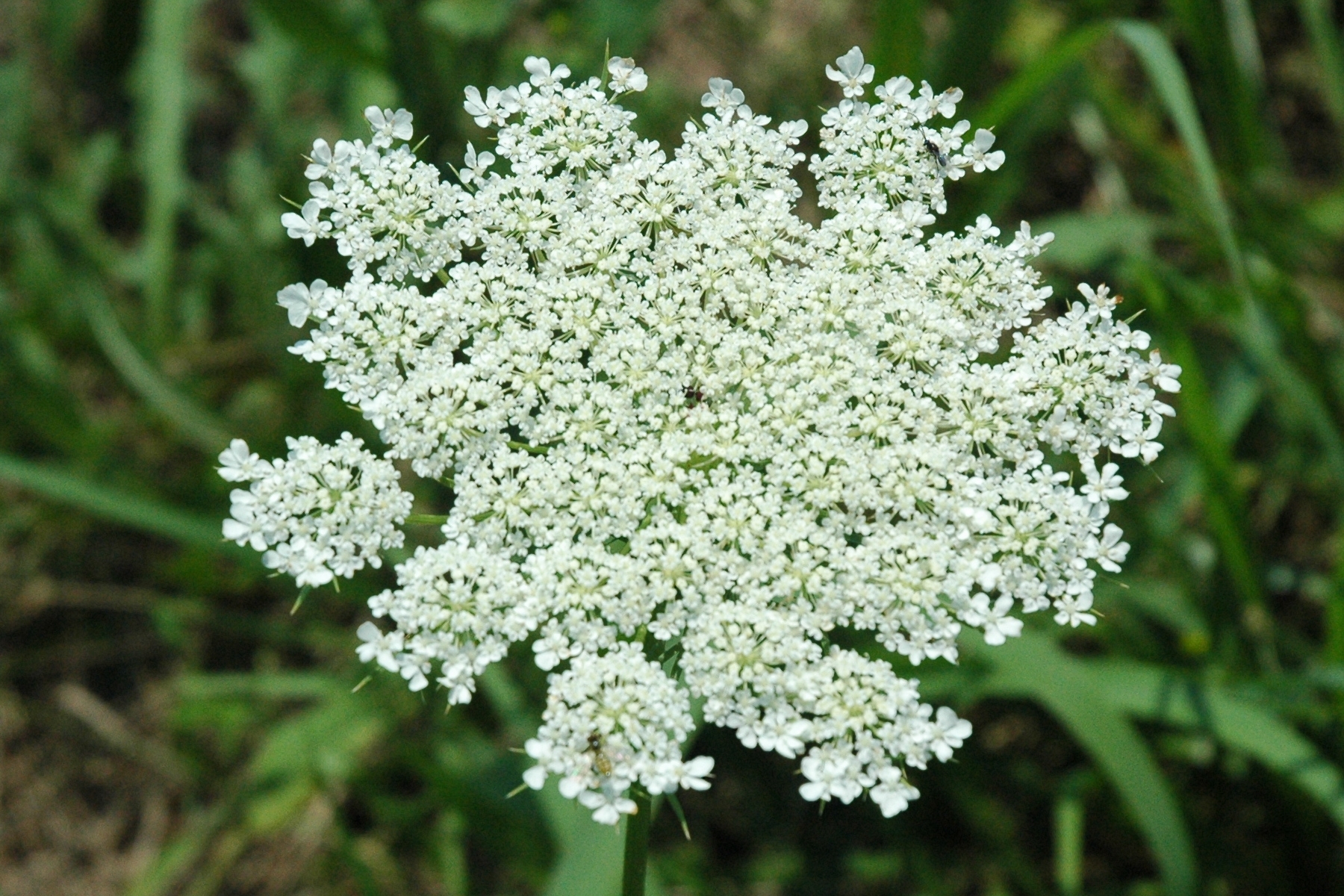Invasive Watch: Wild Carrot

Wild carrot forms a rosette of leaves the first year and a flowering stalk the following year, flowering from July to September. One plant can produce between 1,000 to 40,000 seeds.
When seeds are mature, the dry flower releases the seeds, then closes under damp conditions. The cycle is repeated. The seeds have hooked spines, allowing them to attach to the fur of animals and travel longer distances.
Once the seed stops traveling, it can remain dormant in soil for several years, then germinate in ¼ inch to 4 inches of soil.

Wild carrot — often called Queen Anne’s Lace — is commonly known for its tiny and white flowers, clustered in flat, dense 2- to 4-inch umbels, often with one dark flower in the center. Before the plant matures, growing up to 4 feet tall, it starts as a rosette, not flowering for the first year.
Mature stems are tall, hollow, hairy and ribbed with leaves that alternate and are pinnately divided, feathery and lacy. The tall stems are hollow, hairy and ribbed.
It earned the name wild carrot because its long taproots smell like carrots.
Tillage and mowing have shown effectiveness in controlling wild carrot. Uprooting, chopping and then burying taproots will control wild carrot, and a single clipping in July has been shown to stop seed production.
Utilizing selective herbicides can help control wild carrot and also round out your well-rounded integrated vegetation management strategy. HighNoon® herbicide controls more than 140 broadleaf weeds and brush species, including wild carrot, all while offering an unmatched combination of use site flexibility, and safety on desirable grasses and forbs.
For added convenience and ease of use, HighNoon herbicide carries no grazing restrictions for any class of livestock. Count on HighNoon herbicide to control many of the toughest broadleaf weeds and woody plants on rangeland and permanent grass pastures resulting in an abundant, high-quality forage base.
Check out the HighNoon Herbicide Interactive Fact Sheet for more information regarding best practices for controlling incompatible vegetation.
Under normal field conditions, HighNoon® is nonvolatile. HighNoon has no grazing or haying restrictions for any class of livestock, including lactating dairy cows, horses (including lactating mares) and meat animals prior to slaughter. Label precautions apply to forage treated with HighNoon and to manure and urine from animals that have consumed treated forage. HighNoon is not registered for sale or use in all states. Contact your state pesticide regulatory agency to determine if a product is registered for sale or use in your state. Consult the label for full details. Always read and follow label directions.
For over 30 years, Vistas® has covered strategies, trends and stories from across the Vegetation Management industry.